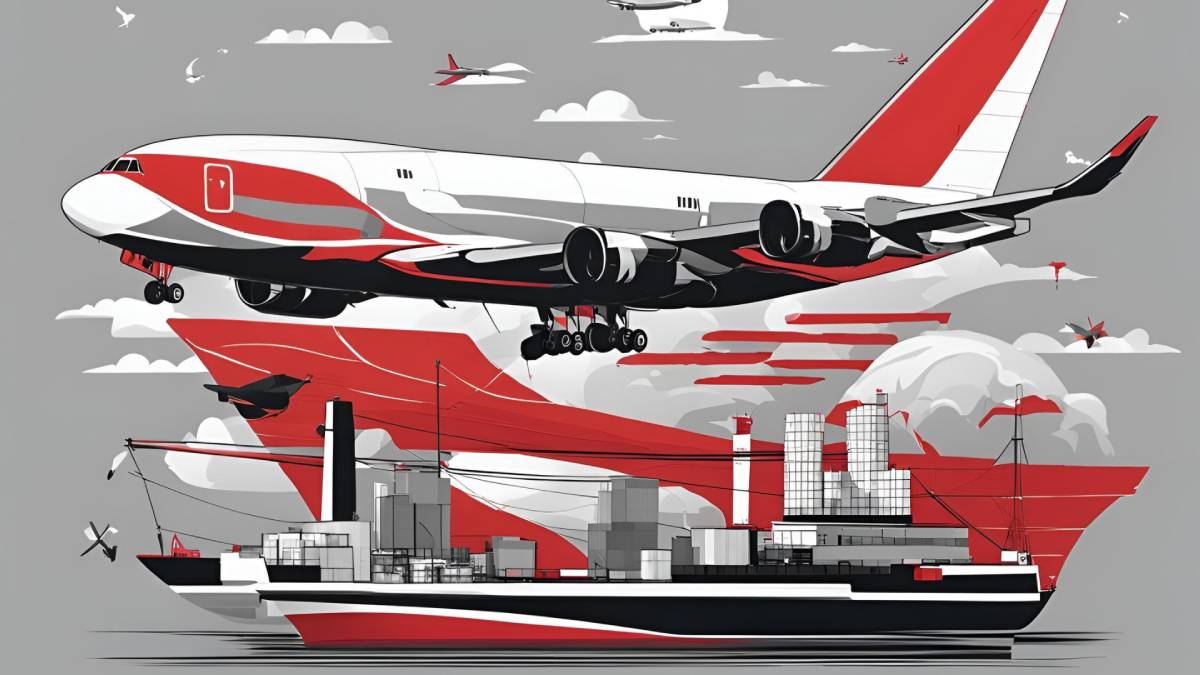Login
Overcoming Common E-Commerce Logistics Challenges

E-commerce has revolutionized the way consumers shop, but with this rapid growth comes an array of logistical challenges that can severely impact a business’s bottom line. Logistics is the backbone of e-commerce; it ensures that products reach customers in a timely, efficient, and cost-effective manner. However, without proper management, these processes can become bottlenecks, leading to dissatisfied customers, missed revenue, and increased operational costs.
This article explores the most common logistics challenges that e-commerce businesses face and presents actionable solutions to help overcome them. By tackling issues related to inventory management, shipping delays, international shipping, last-mile delivery, returns, technology integration, and cost management, businesses can significantly improve their operational efficiency and customer satisfaction.
Inventory Management
Problem: Stock Shortages or Overstocking
Inventory management is often a critical challenge for e-commerce businesses. Stockouts lead to lost sales and frustrated customers, while overstocking ties up capital and increases storage costs. Finding the right balance is essential for maintaining smooth operations and healthy profit margins.
Solution
- Automated Inventory Management Systems: An automated system can track inventory levels in real time, helping businesses avoid stockouts or overstocking. These systems notify businesses when stock is running low and allow for replenishment before a shortage occurs. This reduces the risk of understocking and avoids the costs associated with holding excess inventory.
- Demand Forecasting: By analyzing historical sales data and market trends, businesses can better predict demand, allowing them to stock more accurately. Tools that integrate machine learning and AI can improve demand forecasting, providing deeper insights into consumer behavior, seasonal trends, and potential spikes in demand.
- Warehouse Optimization: An optimized warehouse layout reduces the time it takes to pick and pack orders. Incorporating barcodes, RFID tags, and efficient inventory management software ensures that inventory levels are tracked precisely, allowing businesses to prevent costly mistakes.
Shipping Delays
Problem: Late Deliveries Impacting Customer Satisfaction
Shipping delays are one of the most frequent complaints from e-commerce customers. In a world where consumers expect fast and reliable deliveries, delays can negatively impact customer satisfaction, tarnishing a brand’s reputation. Slow shipping times can be caused by poor carrier management, inefficient logistics processes, or unforeseen external factors like weather or customs delays.
Solution
- Reliable Carrier Partnerships: Building relationships with reputable shipping carriers can improve delivery reliability. It’s crucial to select carriers with strong delivery networks, service guarantees, and positive track records.
- Multiple Shipping Options: Offering customers different shipping options (e.g., standard, expedited, or same-day delivery) helps manage expectations and allows them to choose a service that suits their needs.
- Localized Warehousing: By strategically placing warehouses in regions close to the customer base, businesses can reduce shipping distances and times. This also enables same-day or next-day delivery for certain locations.
- Real-Time Tracking: Offering customers real-time tracking allows them to monitor their order’s progress. Providing transparent communication about potential delays builds trust and keeps customers informed, reducing frustration.
Managing International Shipping
Problem: High Costs, Customs Delays, and Complex Regulations
Expanding globally opens new revenue streams for e-commerce businesses but brings additional logistics challenges, especially in international shipping. High costs, customs issues, and navigating complex import/export regulations can slow down shipments, drive up costs, and frustrate customers.
Solution
- Partner with 3PL Providers: Third-party logistics (3PL) providers have specialized knowledge of international shipping regulations and can streamline the entire process. They handle customs clearance, duties, and tariffs, ensuring compliance with each country’s laws.
- Customs Expertise: Knowing the regulations of each destination country is key to avoiding delays and penalties. Businesses should maintain a robust understanding of customs procedures or rely on logistics partners that specialize in cross-border shipping.
- Fulfillment Centers in Key Regions: Utilizing fulfillment centers in target countries or regions reduces international shipping costs and delivery times. By shipping from a local warehouse, businesses can avoid long customs processes and provide faster delivery to customers.
- Transparent Shipping Costs: E-commerce businesses should offer transparent pricing for international shipping, including duties and taxes. Unexpected costs during checkout or delivery can lead to customer dissatisfaction or abandoned carts.
Last-Mile Delivery Issues
Problem: Inefficiencies in the Final Leg of Delivery
Last-mile delivery—the final step of the delivery process where goods are transported from the warehouse to the customer’s door—is often the most expensive and complex part of the logistics chain. Issues such as traffic, incorrect addresses, and failed deliveries can result in delays, increased costs, and frustrated customers.
Solution
- Partner with Last-Mile Specialists: Collaborating with logistics providers specializing in last-mile delivery can help improve efficiency. These companies often have networks of local couriers who are familiar with regional routes, enabling faster, more reliable deliveries.
- Optimized Delivery Routes: Implementing route optimization software helps reduce delivery times and fuel costs by providing drivers with the most efficient routes. This is especially beneficial in urban areas where traffic congestion can delay deliveries.
- Flexible Delivery Options: Offering alternative delivery methods, such as pick-up points, click-and-collect services, and delivery lockers, provides more convenience for customers and reduces the risk of failed deliveries due to the recipient’s absence.
Return Logistics (Reverse Logistics)
Problem: Complex and Expensive Returns Process
Returns are an inevitable part of e-commerce, but handling returns efficiently and cost-effectively can be challenging. If the return process is difficult, it can lead to customer dissatisfaction, while inefficient reverse logistics can drain resources and profits.
Solution
- Simplified Returns Process: Make the return process straightforward by providing prepaid return labels, clear instructions, and accessible customer service. A hassle-free return policy encourages customers to shop with confidence, knowing that they can easily return products if needed.
- Clear Return Policies: Having a clear, well-communicated return policy reduces confusion and minimizes disputes with customers. Ensure the policy is visible on product pages and during the checkout process.
- Efficient Reverse Logistics Providers: Partnering with reverse logistics specialists can streamline the process of collecting, inspecting, and restocking returned items. These providers handle the returns process from start to finish, ensuring that products are back in inventory quickly.
- Data-Driven Improvements: Analyzing return data helps businesses identify patterns in product defects, packaging issues, or other areas for improvement. This allows them to make changes that reduce the rate of returns and improve the customer experience.
Technology Integration
Problem: Lack of Real-Time Data and Poor System Integration
Technology is the backbone of modern e-commerce logistics. However, many businesses struggle with integrating various systems—such as inventory management, shipping platforms, and customer management software—leading to delays, miscommunication, and inefficiency.
Solution
- Seamless Systems Integration: Integrating logistics platforms with e-commerce and ERP systems enables smoother operations by syncing order processing, inventory updates, and shipment tracking. This reduces errors and improves overall efficiency.
- Advanced Tracking Tools: Implementing tracking technologies like RFID or blockchain can increase transparency in the supply chain, allowing businesses to track shipments, prevent fraud, and ensure product authenticity.
- AI-Driven Tools: AI and machine learning can optimize supply chain operations by improving demand forecasting, automating warehouse operations, and providing actionable insights for cost reduction and efficiency improvements.
Cost Management
Problem: High Logistics Costs Affecting Profit Margins
E-commerce logistics costs, including warehousing, shipping, and handling, can quickly add up, eating into profit margins. Businesses that do not actively monitor and manage these costs risk becoming uncompetitive in the marketplace.
Solution
- Negotiate Carrier Rates: Businesses should regularly negotiate rates with carriers, especially as shipping volumes grow. Securing discounted rates based on bulk shipments or long-term partnerships can significantly reduce costs.
- Bundling Shipments: Consolidating orders into fewer shipments lowers handling and transportation costs. This method is particularly effective for businesses with multiple items going to the same geographic region.
- Outsource to 3PL Providers: Outsourcing logistics to third-party providers helps e-commerce businesses scale more efficiently, as these providers often have the infrastructure and technology to handle logistics at a lower cost than in-house operations.
- Monitor Storage Fees: Regularly reviewing warehouse storage fees and optimizing stock levels can prevent unnecessary costs. Businesses should avoid overstocking to reduce long-term storage charges and consider options like cross-docking to minimize warehouse usage.
Customer Expectations
Problem: Meeting Increasing Customer Demands for Fast, Free, and Flexible Shipping
Today’s e-commerce customers expect fast and free shipping options, along with flexible delivery and return policies. Failing to meet these demands can lead to higher cart abandonment rates and lost sales.
Solution
- Multiple Shipping Tiers: Offering various shipping options—such as free standard shipping, paid expedited delivery, and same-day options—allows customers to choose the service that best fits their needs.
- Accurate Delivery Estimates: Providing realistic delivery estimates helps manage customer expectations. If there are delays, proactively communicating the issue can help maintain customer trust.
- Proactive Communication: In the event of shipping delays or other issues, keeping customers informed through automated notifications or emails ensures transparency and prevents frustration.
- Enhanced Packaging: Using durable packaging that minimizes the risk of damage in transit can help reduce the number of returns and improve the overall customer experience.
Stay Agile and Invest in Improvements
E-commerce logistics present numerous challenges, but with the right strategies, businesses can overcome these obstacles to create a seamless shopping experience for customers. From leveraging technology and optimizing inventory to building strong partnerships with carriers and 3PL providers, a proactive approach to logistics can result in reduced costs, faster delivery times, and higher customer satisfaction. As e-commerce continues to evolve, businesses that stay agile and invest in improving their logistics operations will thrive in an increasingly competitive marketplace.
